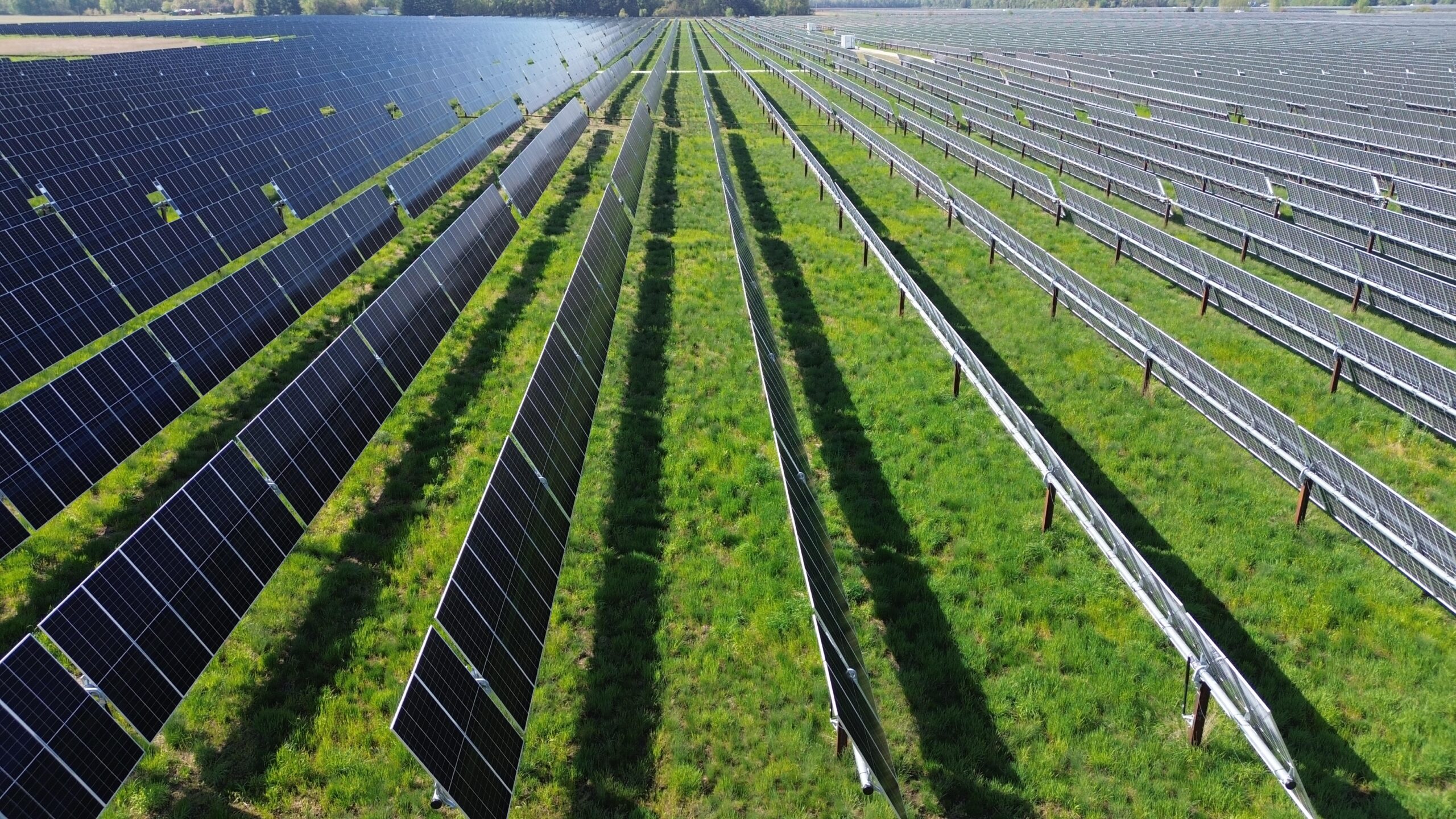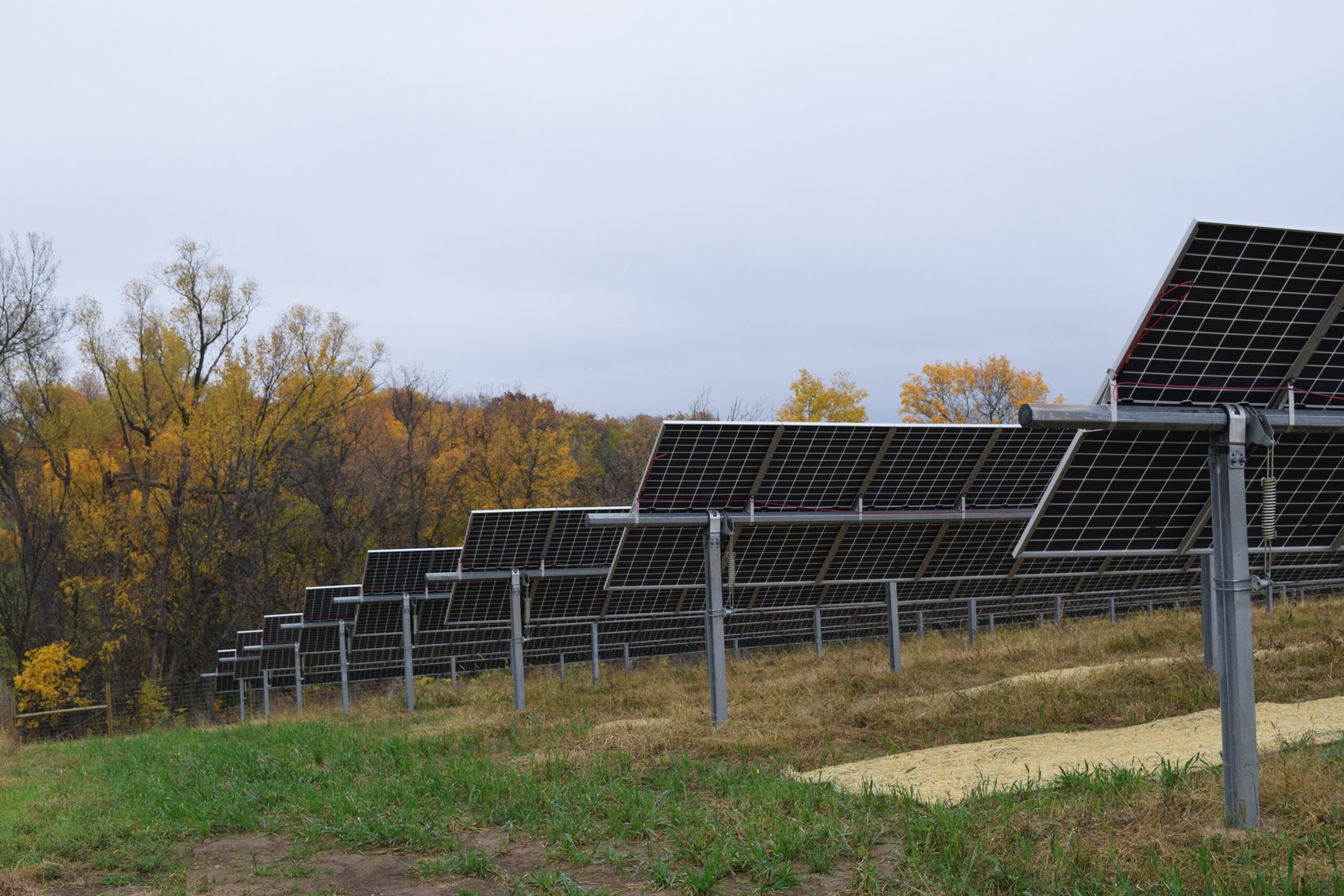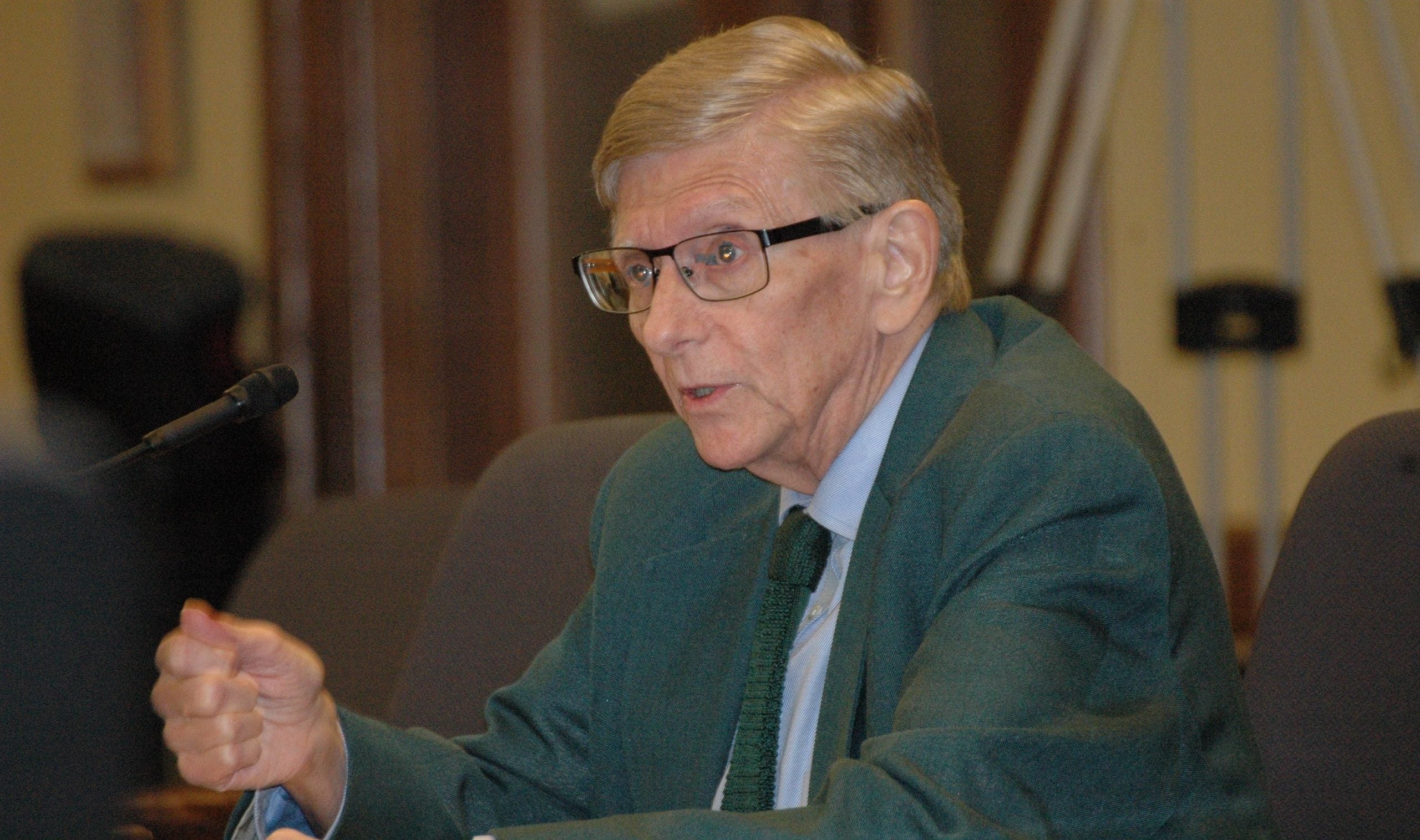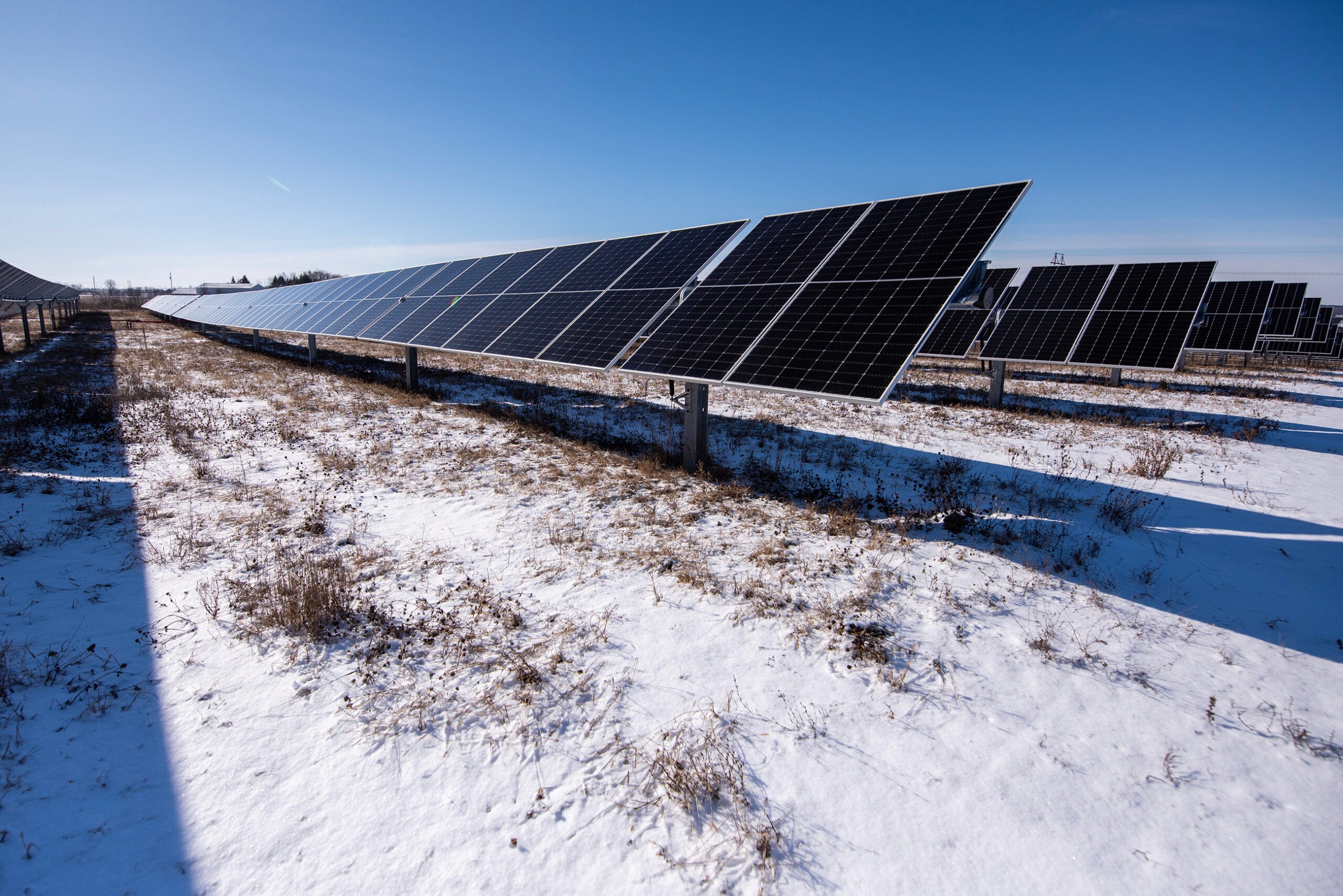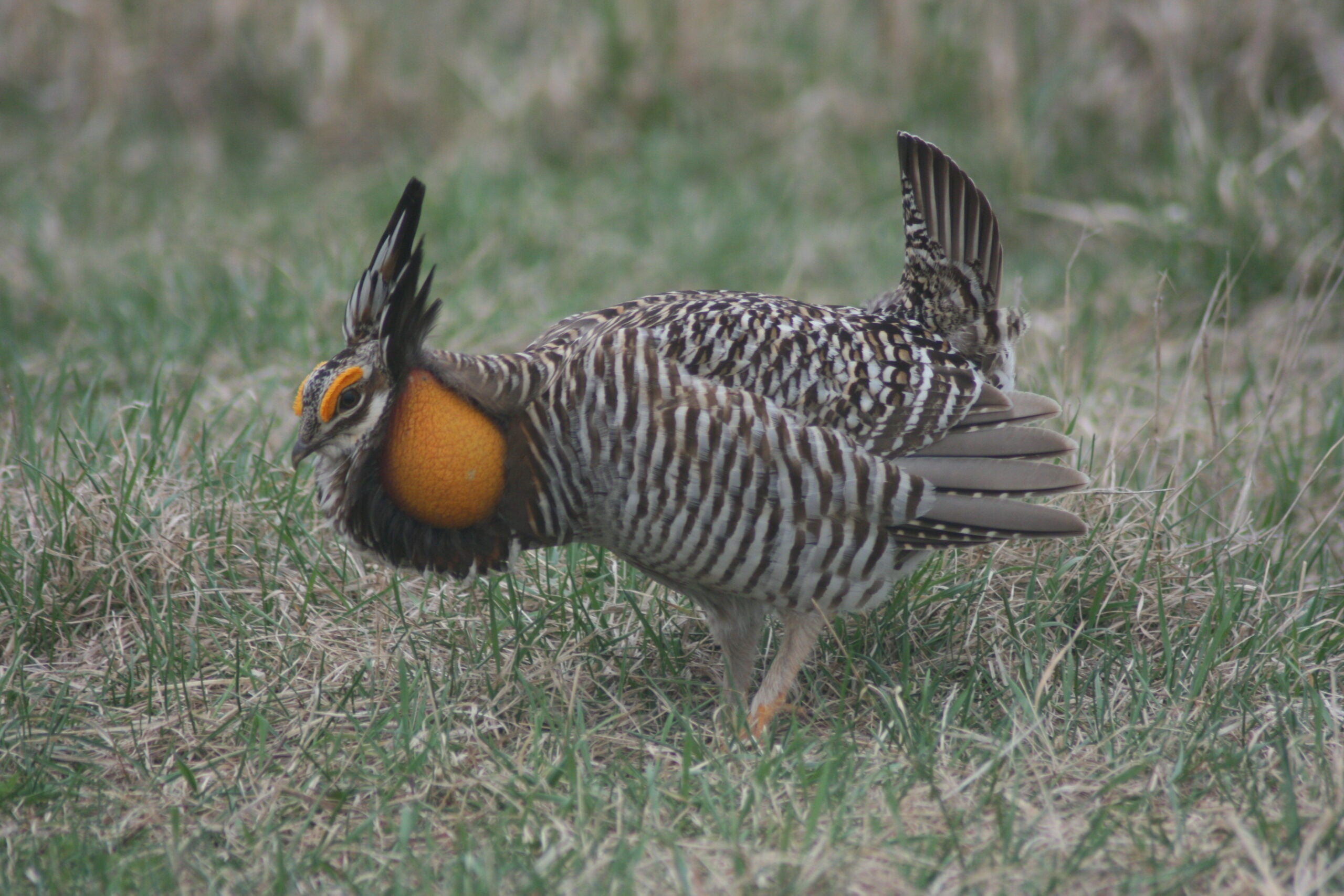The developer behind the largest solar project ever approved in Wisconsin has agreed to a legal settlement with a state conservation group aimed at protecting habitat of the Greater Prairie Chicken.
The agreement was announced announced Monday.
The Vista Sands Solar project in Portage County will cover more than 5,000 acres with solar panels, producing enough electricity to power approximately 230,000 homes. The Public Service Commission of Wisconsin, os PSC, approved the project late last year.
News with a little more humanity
WPR’s “Wisconsin Today” newsletter keeps you connected to the state you love without feeling overwhelmed. No paywall. No agenda. No corporate filter.
In February, Wisconsin Wildlife Federation filed an appeal in Columbia County circuit court, aimed at overturning or modifying the PSC’s decision. The group’s aim was to force better protections for prairie chickens, a species categorized as threatened by the state. The greatest concentration of the grassland birds live in the Buena Vista State Wildlife Area in Portage County.
“Certain parts of the project got pretty close to either nesting, lekking ground or habitat,” said Cody Kamrowski, executive director of the Wisconsin Wildlife Federation. “That was the basis of our appeal.”
Soon after the appeal was filed, the developer, Doral Renewables, reached out, and both sides have been negotiating behind the scenes for months to come to a mutually beneficial decision, Kamrowski said.
On Monday, Doral Renewables and the Wisconsin Wildlife Federation announced a settlement agreement under which the conservation group would withdraw its appeal, pending approval from the Public Service Commission.
The agreement sets aside 750 acres for the prairie chickens. Doral is also committing to making a $1 million contribution to the wildlife federation for habitat restoration and land acquisition to support prairie chicken management.
That’s in addition to the $2.1 million Doral pledged to the Wisconsin Department of Natural Resources to support the agency’s prairie chicken management plan. The company made that pledge in response to concerns raised during the state approval process about the effect it could have on the birds.
Kamrowski also said the wildlife federation worked with biologists to identify the 750 acres that “were the most pivotal to not be developed” because they’re “key parcels” that the greater prairie chickens use.
“Since [the Wisconsin Wildlife Federation] and the company were in lockstep agreement on this, we’re not anticipating any issues from the Public Service Commission, but we never know,” he said.
Jon Baker, vice president of development at Doral Renewables and project manager for the Vista Sands Solar project, said the developer was able to identify 350 acres of new project area that could be used to host solar equipment, which allowed it to dedicate land to supporting prairie chicken habitat.
“We just wanted to make sure we could maximize the benefits of the project while still respecting the concerns of the conservation groups that have made it their life’s mission to protect and enhance the species in and around these conservation areas,” he said.
Baker also said the company is still waiting on studies looking into the impact of connecting the project to the electric grid. He said they expect to get those studies sometime this year, with construction planned to begin next year.
He said the project could take about three years to complete and Doral Renewables hopes to have it online and delivering energy by 2028.
“The power produced by this plant could power the equivalent of about 230,000 homes in the state of Wisconsin,” Baker said. “That’s a very significant amount of emission free electricity that can be produced over the 30- to 35-year life of the project.”
Wisconsin Public Radio, © Copyright 2025, Board of Regents of the University of Wisconsin System and Wisconsin Educational Communications Board.

